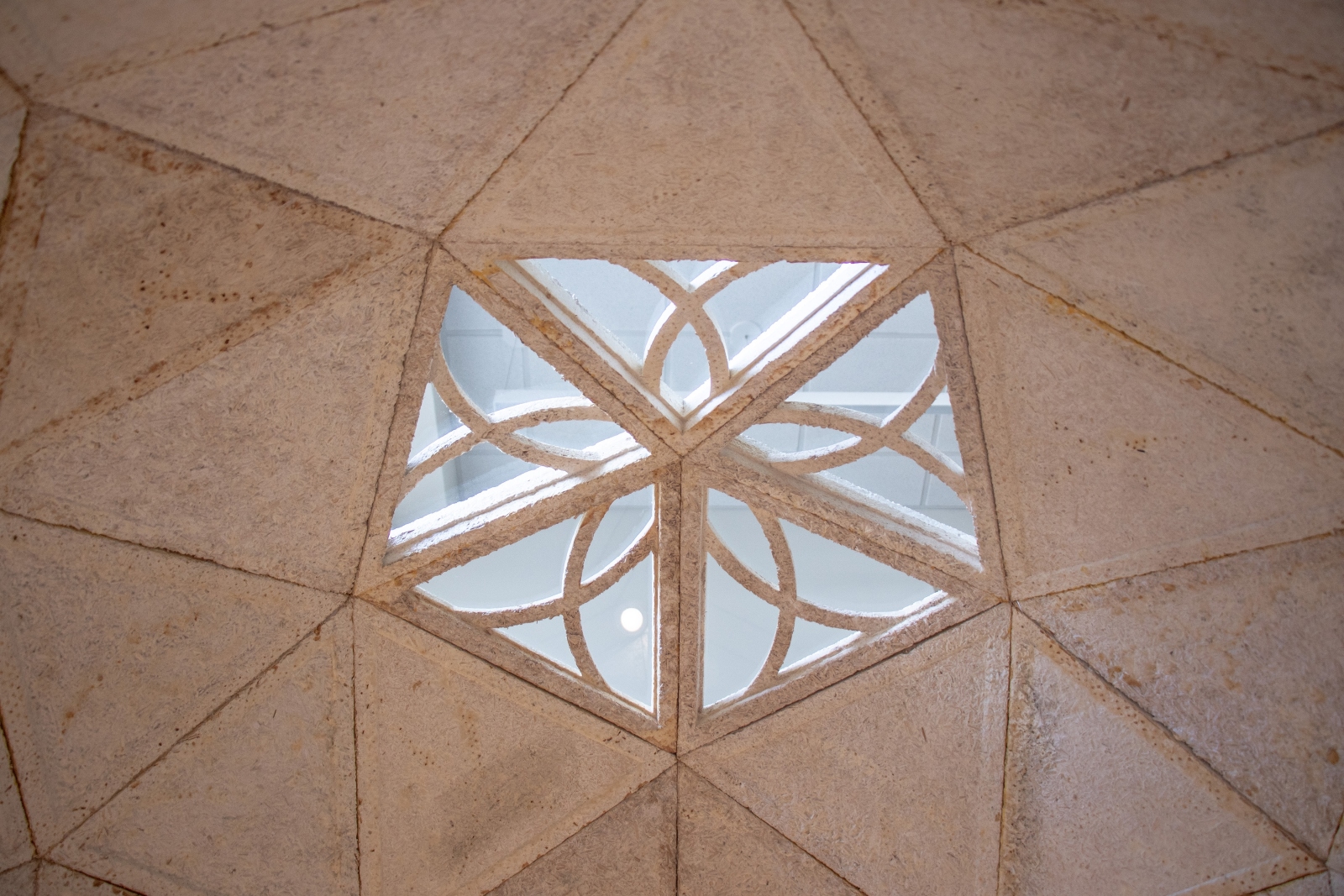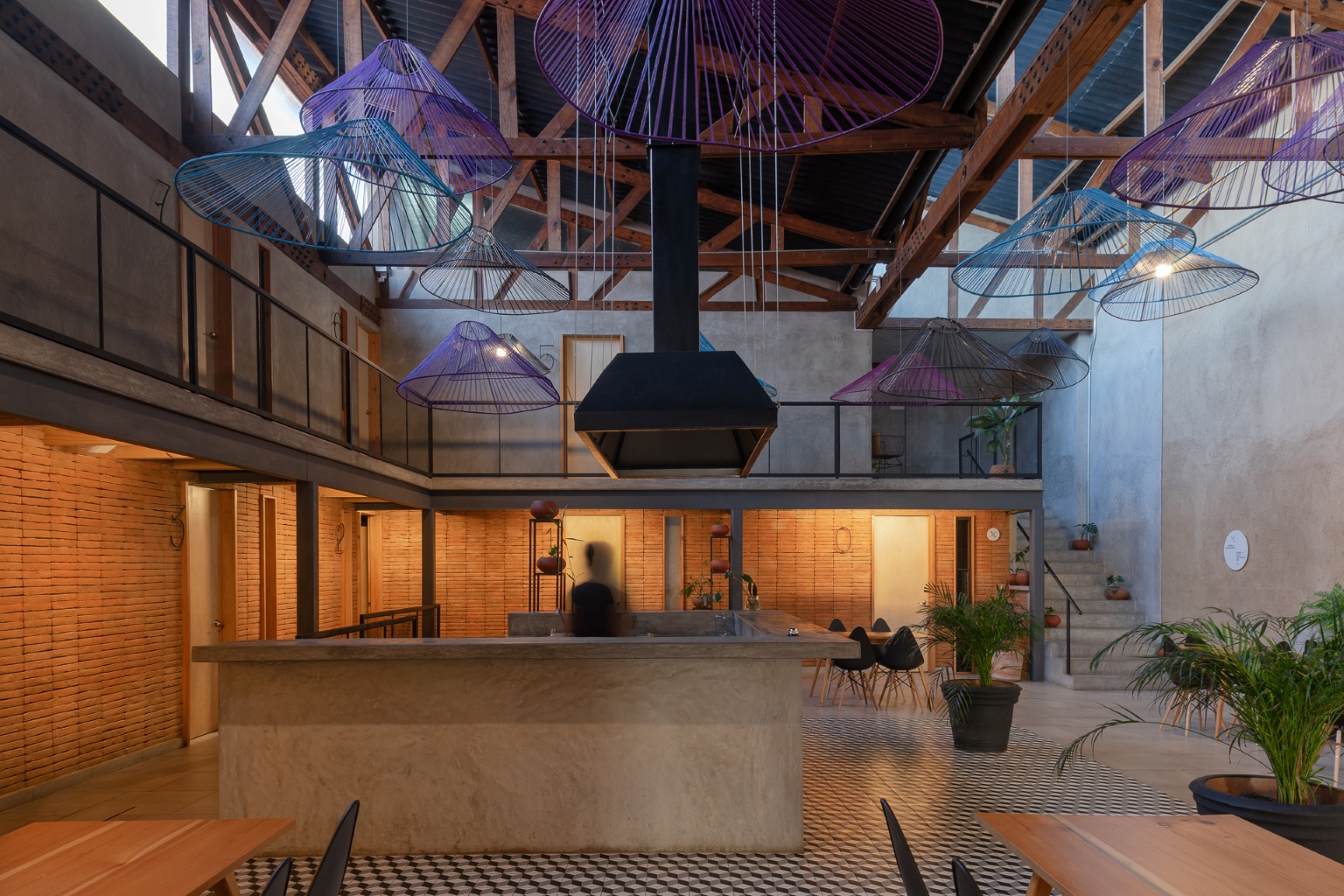In December 2024, Peruvian practice Eletres Studio revealed the Horizon Pavilion on the hilltop campus of the Catholic University of Santiago de Guayaquil. The light‑footed installation sits more than 70 m above sea level at one of the city’s highest points, creating a dramatic lookout over Guayaquil’s skyline. The project is conceived as a place for contemplation: Eletres Studio’s description likens it to a bird alighting after a long flight, framing the city through a gentle arching structure and offering what the architects call “a temporary space for prolonged memory.”



Project Snapshot
| Key Detail | Information |
|---|---|
| Client | Private |
| Architects | Luis Albino Reyes & Danerix Cardenas (Eletres Studio) |
| Location | Campus of the Catholic University of Santiago de Guayaquil, Guayaquil, Ecuador |
| Built Area | 34 m² (footprint of the pavilion) |
| Completion | December 2024 |
| Materials | Steel tubes, circular steel ring, translucent roofing membrane |
| Height | ~4.5 mdesignboom.com |
| Structural System | Ten modular M‑shaped steel frames joined by a horizontal circular ring; anchored into the ground |

Context and Design Intent
Elevated Site
Guayaquil is a sprawling port city on Ecuador’s Pacific coast. Eletres Studio’s pavilion occupies a rarely accessible hilltop clearing on the university campus, enabling it to function as a “visual threshold” between the city, the river, and the surrounding hills. The site’s isolation and serenity, defined by arid vegetation and rocky outcrops, encourage visitors to slow down and commune with the environment. By placing the pavilion on a prominent ridge, the architects sought to “join the horizon,” turning the act of looking at the city into an elevated ritual.
Catenary Inspiration
The Horizon Pavilion is essentially a catenary curve, the shape a suspended chain or cable assumes under its weight, translated and flipped into habitable architecture. Eletres Studio adopted the curve’s inverse geometry to create two parallel circulation spaces. In plan, the pavilion reads as a pair of slender, parallel aisles; in section, it resembles a thin arch with a central opening that frames views and allows movement. This structural strategy emphasises geometric lightness; visitors inhabit the concavity of the curve, passing beneath a canopy that seems to float.
Modularity and Construction
To deliver the pavilion quickly and economically, Eletres Studio developed a modular building system. The load-bearing structure comprises ten M-shaped steel frames anchored below grade; these units are connected by metal angles at their tops and tied together by a continuous circular ring that stabilizes the roof. A translucent fabric membrane is draped over this skeleton, filtering light while allowing the structure’s silhouette to remain visible. According to the firm, the 4.5‑m‑tall pavilion’s components were prefabricated and pre‑assembled in Huancayo, Peru, then transported to Guayaquil. Full‑scale prototypes were tested off-site, and only the vertical steel elements were purchased locally and cut to predetermined sizes. This dual‑location process minimized on‑site work and reflects the studio’s collaboration between Peru and Ecuador.




Spatial Experience
On approach, the pavilion appears as a shimmering, elongated arc rising from the hillside. Visitors enter through one of the two parallel corridors formed by the inverted catenary. The central void not only frames the skyline but also creates a continuous passage that extends toward the horizon, reinforcing the sensation of moving through a threshold. The interplay of steel and translucent membrane causes light to bounce softly within the pavilion, further intensifying the meditative atmosphere. The design thus achieves a synthesis of structure, geometry, and landscape, presenting itself as both a sculptural object and an accessible public space.
Relation to Local Topography
By aligning the pavilion with the ridge, Eletres Studio accentuated the site’s natural contours. The slender footprint (34 m²) and elevated roof minimise ground disturbance, allowing the surrounding vegetation and rock formations to remain prominent. The open design invites breezes and frames the changing light and weather conditions of Guayaquil, from humid mornings to glowing sunsets. The horizon, rather than the pavilion itself, becomes the dominant focus.
Significance and Reflection
The Horizon Pavilion exemplifies how a small-scale intervention can transform an underutilised promontory into a cultural viewing platform. Its inverse catenary geometry references structural logic while providing an experiential narrative—visitors traverse a lightweight arch that appears to float. The project also demonstrates the potential of prefabricated, modular construction to enable international collaboration and streamline on‑site assembly. Through careful siting and poetic form, Eletres Studio has crafted a temporary installation that invites reflection on the relationship between landscape, structure, and memory.



Credits and Further Information
Luis Albino Reyes and Danerix Cardenas of Eletres Studio designed the Horizon Pavilion. It was completed in December 2024, with photography credited to Eletres Studio. For more details or inquiries, readers can visit the studio’s website (eletresstudio.com). The project’s minimal footprint and striking geometry make it a compelling case study for design professionals interested in lightweight structures and modular fabrication.
Photo Credit: Eletres Studio









